Fishes
Media
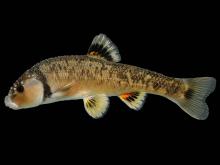
Species Types
Scientific Name
Campostoma anomalum (syn. C. pullum)
Description
The central stoneroller is a brownish minnow with small eyes. The lower jaw has a flat, shelflike extension used to scrape algae from rocks. Found statewide, it is most active during the daytime.
Media

Species Types
Scientific Name
Ichthyomyzon fossor
Description
The northern brook lamprey is a great example of a nonparasitic lamprey. While lampreys as a group are famous for being fish parasites, brook lampreys are essentially bottom feeders.
Media

Species Types
Scientific Name
Ichthyomyzon castaneus
Description
The chestnut lamprey is an eel-like fish that many people find interesting because it's a vampire to other fish. Adults have a well-developed, rasplike oral disc, seven porelike gill openings, no paired fins, and a single nostril.
Media

Species Types
Scientific Name
Anguilla rostrata
Description
The American eel is considered an uncommon catch by Missouri sport anglers. This species is known to take natural baits and rarely takes artificial baits.
Media
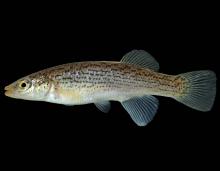
Species Types
Scientific Name
Fundulus catenatus
Description
The northern studfish is common and widely distributed in every principal Ozark stream system except the Neosho. Males in spawning coloration are some of our prettiest topminnows.
Media
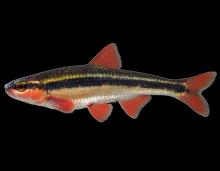
Species Types
Scientific Name
Luxilus pilsbryi
Description
In our state, the duskystripe shiner is only found in the White River system of southwest and south-central Missouri. It prefers swift, clear headwater streams. The dark stripe along the side extends from nose to tail with a lighter-colored band above it.
Media
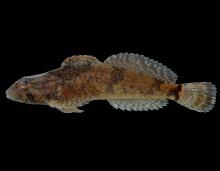
Species Types
Scientific Name
Cottus bairdii
Description
In Missouri, the mottled sculpin occurs in the Niangua River system, some tributaries of the Lake of the Ozarks, the Meramec, Gasconade, and Osage river systems, and some other eastern Ozark streams. It is most similar to the Ozark and knobfin sculpins.
Media

Species Types
Scientific Name
Cottus hypselurus
Description
The Ozark sculpin occurs only in the Osage, Gasconade, and Black river systems, in the Ozarks of southern Missouri and northern Arkansas. It is most similar to the mottled and knobfin sculpins.
Media
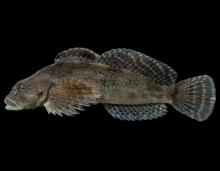
Species Types
Scientific Name
Cottus immaculatus
Description
The knobfin sculpin occurs only in the Current, Eleven Point, and White river drainages in the Ozarks of southern Missouri and northern Arkansas. Until 2010, it was considered the same as the Ozark sculpin.
Media
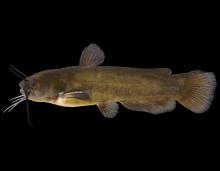
Species Types
Scientific Name
Ameiurus natalis
Description
The yellow bullhead is widespread in Missouri. It is the most common bullhead catfish in the Ozarks and Bootheel lowlands. It has white chin barbels, and the edge of its tail fin is straight, not notched.
See Also


Media

Species Types
Scientific Name
Amphiuma tridactylum
Description
The three-toed amphiuma is an eel-like, completely aquatic salamander. It has very small forelimbs and hind limbs, each with three tiny toes. In Missouri it’s found only in the Bootheel region.
Media

Species Types
Scientific Name
Siren intermedia nettingi
Description
The western lesser siren is an eel-like, aquatic salamander with external gills, small eyes, small forelimbs with four toes, and no hind limbs. In Missouri, it’s found mostly in the Bootheel and northward in counties near the Mississippi River.
About Fishes in Missouri
Missouri has more than 200 kinds of fish, more than are found in most neighboring states. Fishes live in water, breathe with gills, and have fins instead of legs. Most are covered with scales. Most fish in Missouri “look” like fish and could never be confused with anything else. True, lampreys and eels have snakelike bodies — but they also have fins and smooth, slimy skin, which snakes do not.





















